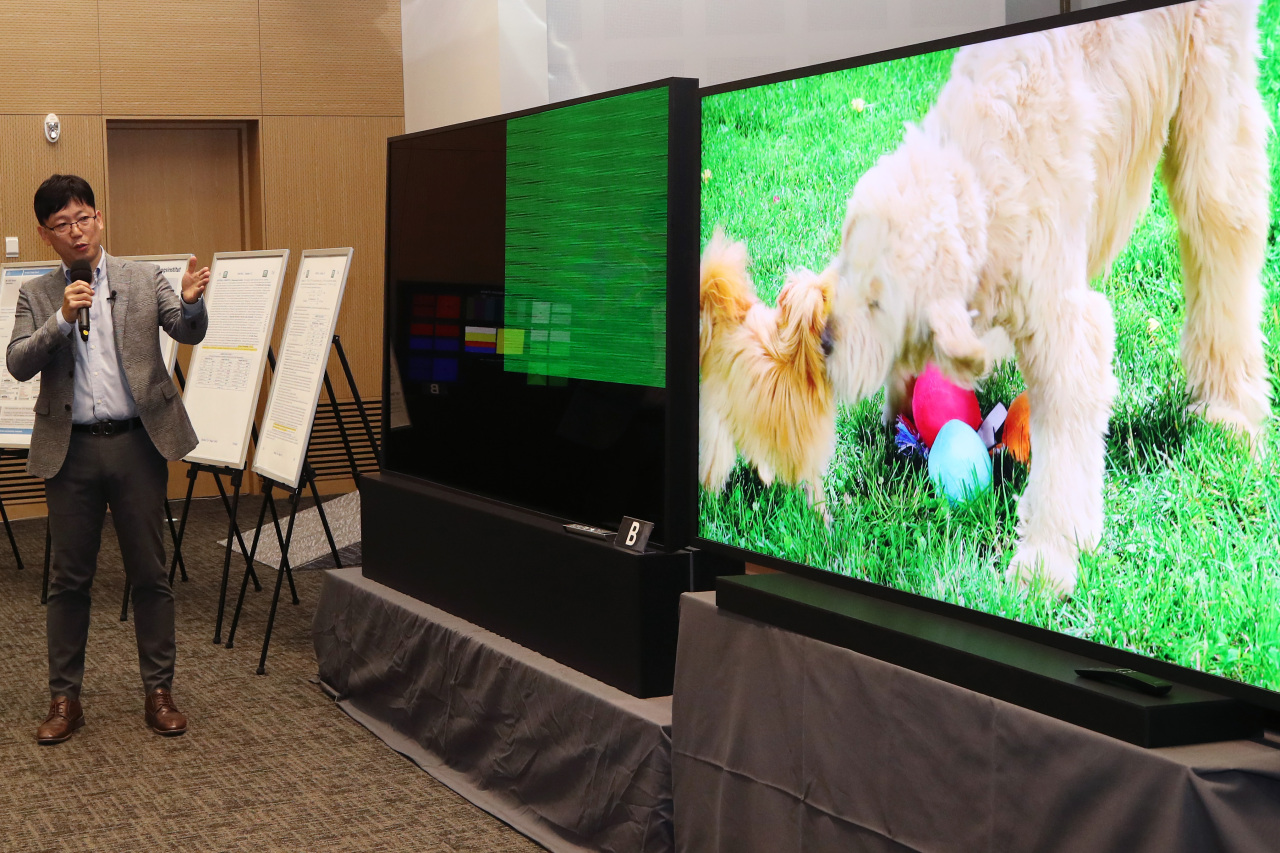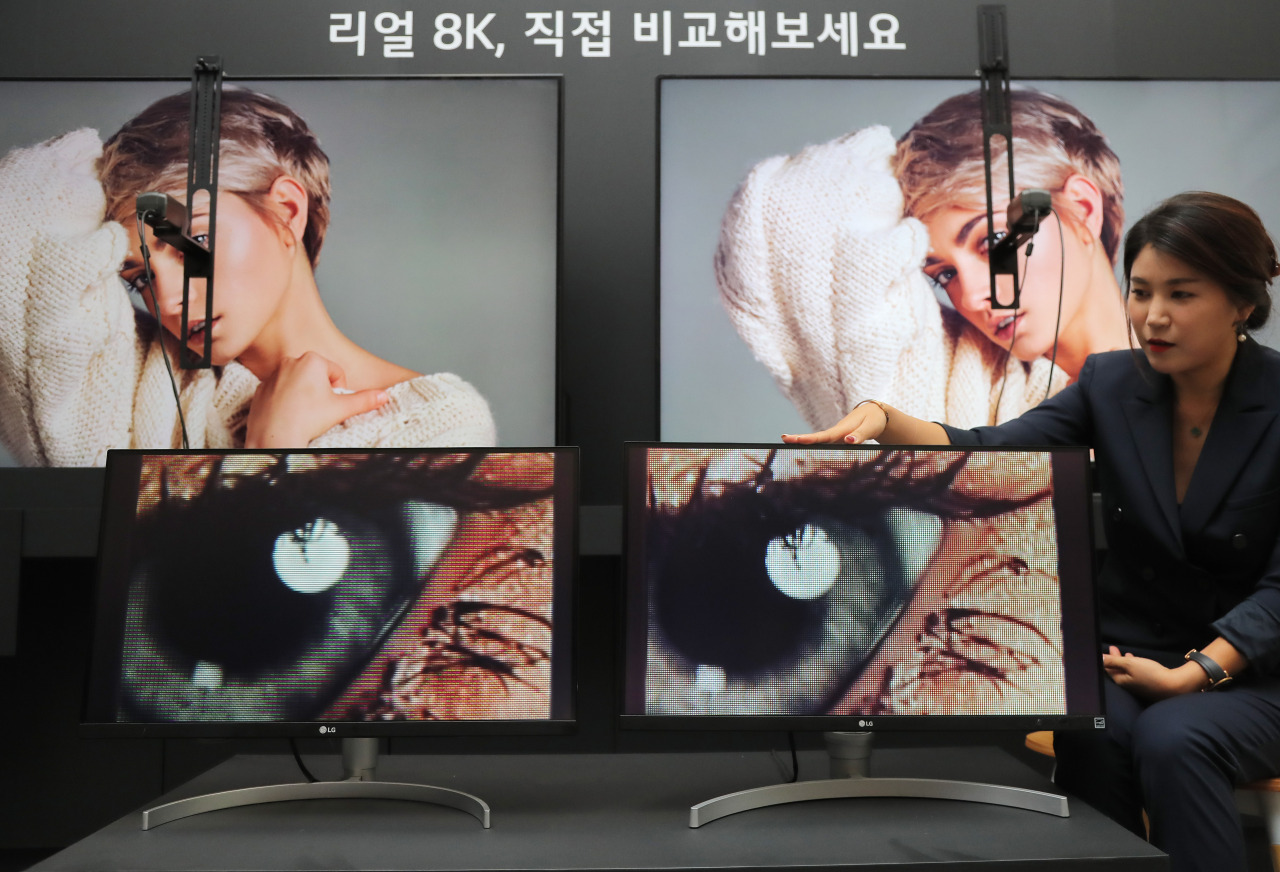The war of words between Samsung and LG Electronics over the picture quality of their 8K TVs, undermining each other’s technological prowess, has baffled South Korean consumers.
In their latest spat, the most often used term is CM, or contrast modulation, the level of distinction between the luminance of white and black colors on a screen. A higher CM leads to a clearer distinction between the colors, producing sharper images.
LG first raised the issue at IFA -- the world‘s leading trade show for consumer electronics and home appliances -- in Berlin earlier this month, revealing the result of tests by certification bodies Intertek and VDE that showed Samsung’s QLED 8K TV has a contrast modulation level of 12 percent, while its NanoCell 8K TV has 90 percent.
While LG claims that the CM level is key to measuring the display resolution, Samsung countered that the measurement is no longer used as an indicator.
According to Samsung, CM is a concept introduced in 1927 to measure the resolution of displays with a countless number of pixels or black-and-white TVs.
“New technologies (pixel layouts) make the current measurements and calculation of display resolution incomplete,” said a Samsung official, citing a copy of a revised report by the International Committee for Display Metrology in May 2016.
In their latest spat, the most often used term is CM, or contrast modulation, the level of distinction between the luminance of white and black colors on a screen. A higher CM leads to a clearer distinction between the colors, producing sharper images.
LG first raised the issue at IFA -- the world‘s leading trade show for consumer electronics and home appliances -- in Berlin earlier this month, revealing the result of tests by certification bodies Intertek and VDE that showed Samsung’s QLED 8K TV has a contrast modulation level of 12 percent, while its NanoCell 8K TV has 90 percent.
While LG claims that the CM level is key to measuring the display resolution, Samsung countered that the measurement is no longer used as an indicator.
According to Samsung, CM is a concept introduced in 1927 to measure the resolution of displays with a countless number of pixels or black-and-white TVs.
“New technologies (pixel layouts) make the current measurements and calculation of display resolution incomplete,” said a Samsung official, citing a copy of a revised report by the International Committee for Display Metrology in May 2016.

The picture quality of new displays, especially ultra-high definition displays like 8K, needs to be measured by taking into account various optical factors, brightness, color volume and image processing technologies, Samsung officials said.
Display experts say the spat isn’t necessarily targeted at ordinary consumers but is more of a byproduct of the cutting-edge tech rivalry.
“It is difficult for consumers to distinguish the CM levels of the two different displays,” said Jang Jin, professor at the Department of Information Display at Kyung Hee University. He explained that CM is one of many attributes of display resolution while 8K is about the number of pixels.
“The latest dispute confirms the different views and directions about 8K technologies sought by the two companies and shows the current levels of 8K technologies developed so far,” said Choi Kyung-cheol, electrical engineering professor at Korea Advanced Institute of Technology.
Samsung and LG’s rivalry to proclaim their superior technology for 8K TVs has been brewing for some time on multiple fronts.
Samsung and 15 other TV makers including Panasonic, Hisense and TCL have created a new interest group called the 8K Association, and they announced on Sept. 1 standards for 8K displays.
According to the association’s definition, an 8K TV should have a resolution of 7,680x4,320 pixels and input frame rates of 24, 30 and 60 frames per second. The peak display luminance is more than 600 units.
It has set HDMI 2.1 as the 8K interface and HEVC as the main codec. A compliance test set will also be developed, enabling a transparent testing process.
Meanwhile, LG is backing its claim by referring to a July announcement by the US Consumer Technology Association, the biggest tech interest group with around 2,200 members, which hosts the annual Consumer Electronics Show in Las Vegas.
“According to the CTA standards established in July, 8K displays should meet a minimum of 50 percent contrast modulation,” said a company official. “Officials from both LG and Samsung were part of the discussion.”
Compared to the standards set by Samsung’s 8K Association, the CTA does have a more specific set of standards for 8K displays.

“Samsung seems to be pushing ahead by making a new set of standards, but that doesn’t mean the current resolution measurement methods are not effective,” said an industry official.
By Song Su-hyun (song@heraldcorp.com)


















![[Today’s K-pop] BTS pop-up event to come to Seoul](http://res.heraldm.com/phpwas/restmb_idxmake.php?idx=642&simg=/content/image/2024/04/17/20240417050734_0.jpg&u=)